
STRESS-STRAIN RIPSTOP CURVES (II)
Effect of the bias in grid angle
By Eric Fontaine
This experiment has been carried out by Eric Fontaine in may of 2021. Some comments added by Pere Casellas. It complements the experiments carried out previously on the deformation of ripstop samples under increasing load.
The objective of this experiment is to study the deformation of ripstop samples with different grid angles. It is well known that the deformation of the ripstop in bias directions, is greater than the deformation in directions parallel to the main grid. Here, we measure and quantify this effect. This deformation has importance in different aspects of the design of the structure of the paragliders. In particular, in a single skin, a poor design that does not take into account these effects, may cause excessive deformation in profiles and loss of performance, due to not foreseen deformations in the load triangles.
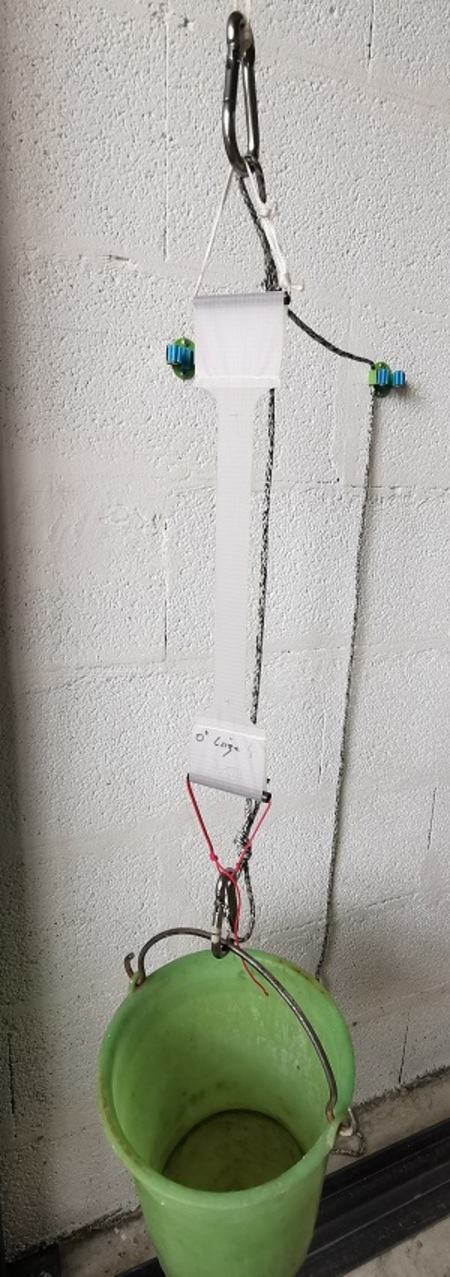 Fig 1. Testing device |
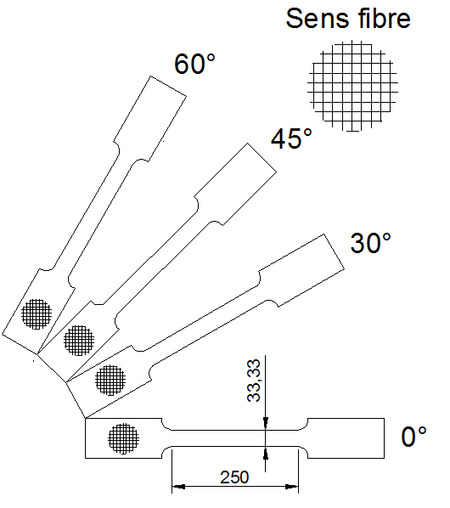 Fig 2. Ripstop samples plan. Samples at 0º, 30º, 45º and 60º degrees. 0º in the transverse direction "weft" (or "woof") |
The test system consists of loading progressively a ripstop tissue strip of 5 cm wide, and simultaneously measuring the distance between two reference points marked on the tissue, and the applied load. The load is increased gradually from 0 kg up to 6 kg.
The result is a table with the pair of values (distance (mm), load (kg)). For a stress-strain curve normalized, these values are converted as follows:
Stress (kg/cm) = Load
(kg) / 5 cm
Strain = ( (Distance / Initial distance) ) -1 )
Strain = ( (Distance / Initial distance) ) -1 )
2. Practical testing
Some photographs taken during the tests:
3. Stress-strain curves
Data sheet (format openoffice).
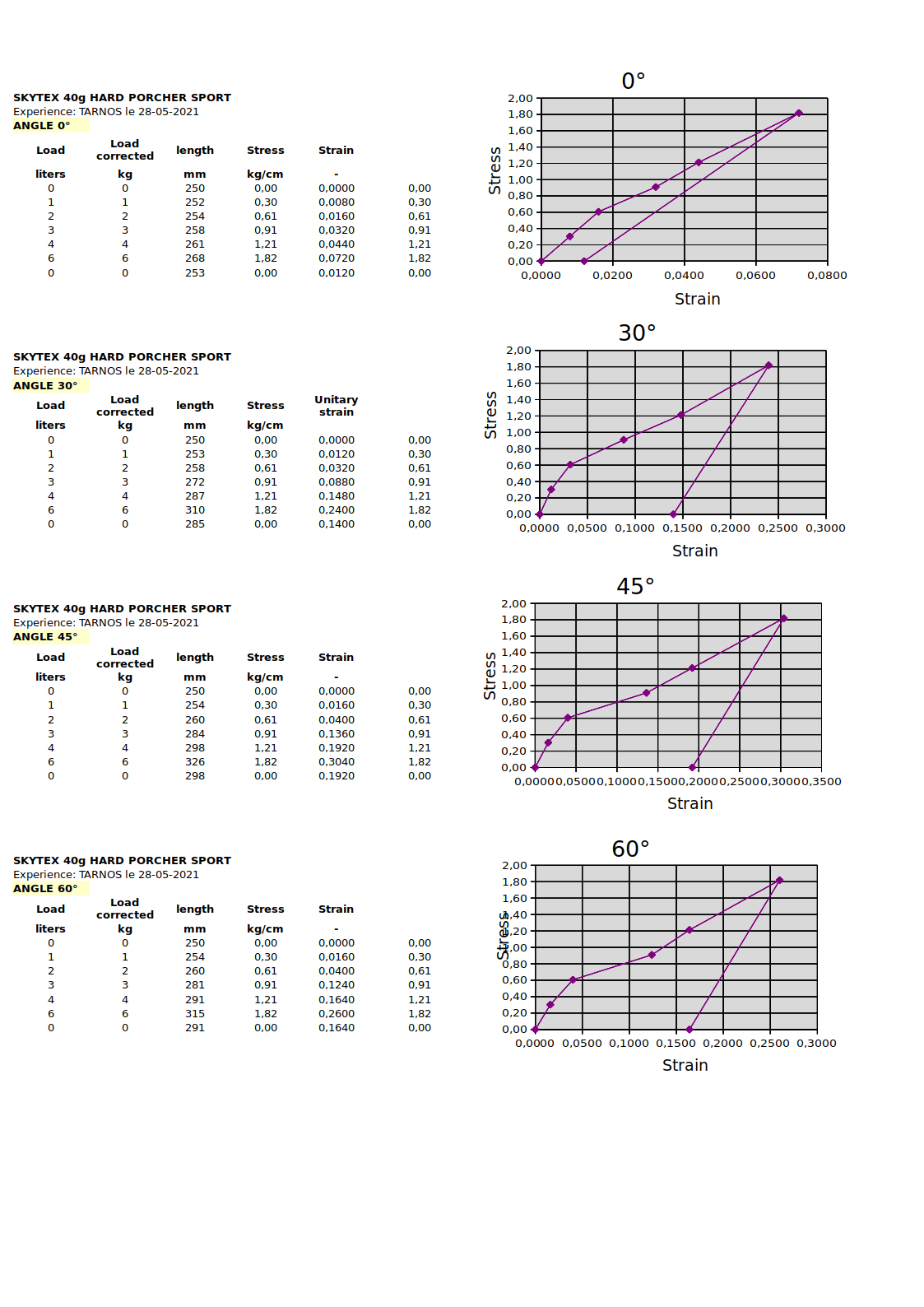
For each measurement angle, two experiments have been performed, presenting the average result in the table.
4. Conclusions
- The deformations at 45º are more than three times greater than the deformations obtained at 0º
- The deformation obtained at 30º is slightly lower than that obtained at 60º. This is consistent with other experiments carried out previously, according to which the deformation in the sense of the weft (transverse) is lower than in the warp (longitudinal)
- The permanent deformation (after removal of the load) is much higher in samples loaded at 45º
- It is recommended to design the triangles of support of single skin wings to avoid deformations differential. The same applies to diagonal V-ribs in the interior of double surface paragliders.
5. Videos:
Some photographs taken during the tests:
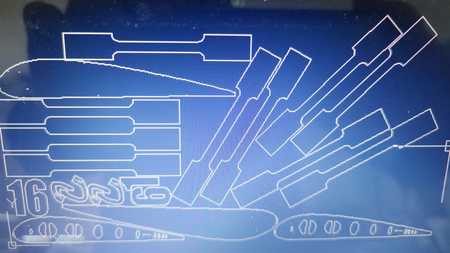 4. Preparation of samples for cutting with laser. |
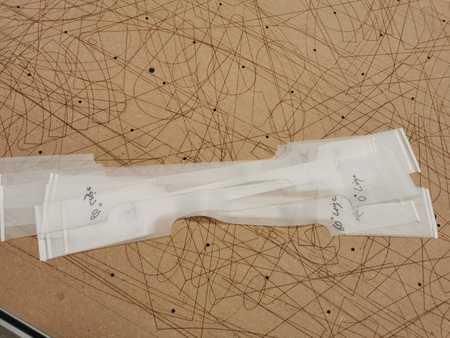 5. Samples |
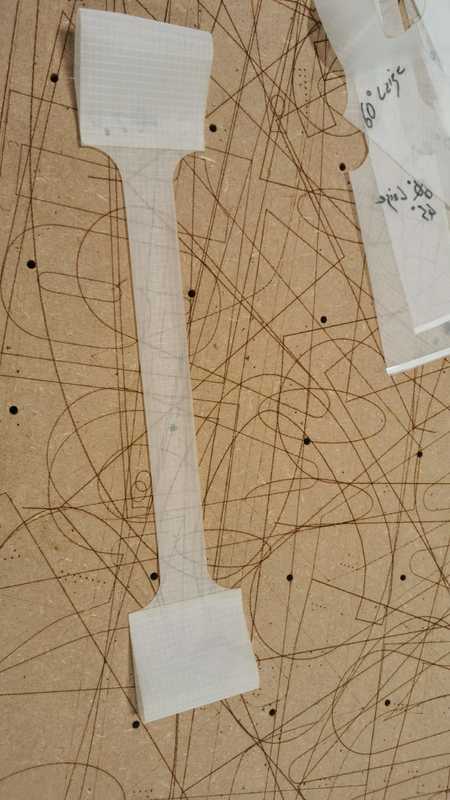 6. Sample detail |
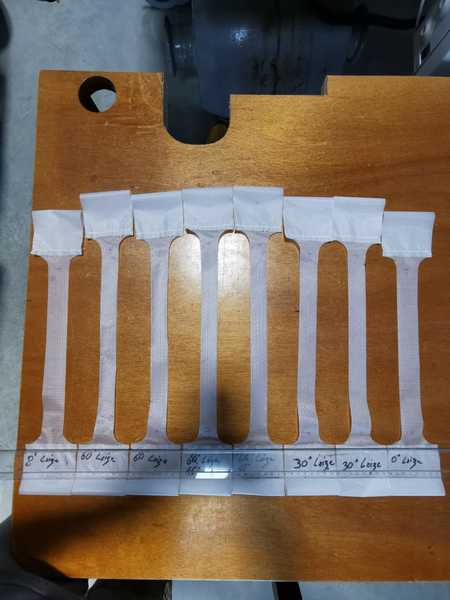 7. Samples using Skytex 40 gr hard finish |
3. Stress-strain curves
Data sheet (format openoffice).

For each measurement angle, two experiments have been performed, presenting the average result in the table.
4. Conclusions
- The deformations at 45º are more than three times greater than the deformations obtained at 0º
- The deformation obtained at 30º is slightly lower than that obtained at 60º. This is consistent with other experiments carried out previously, according to which the deformation in the sense of the weft (transverse) is lower than in the warp (longitudinal)
- The permanent deformation (after removal of the load) is much higher in samples loaded at 45º
- It is recommended to design the triangles of support of single skin wings to avoid deformations differential. The same applies to diagonal V-ribs in the interior of double surface paragliders.
5. Videos:
Test (part I):
Test (part II):
Note: The data presented here are
not official, and do not represent
the average characteristics of the tissues.
Home LE
Home LE